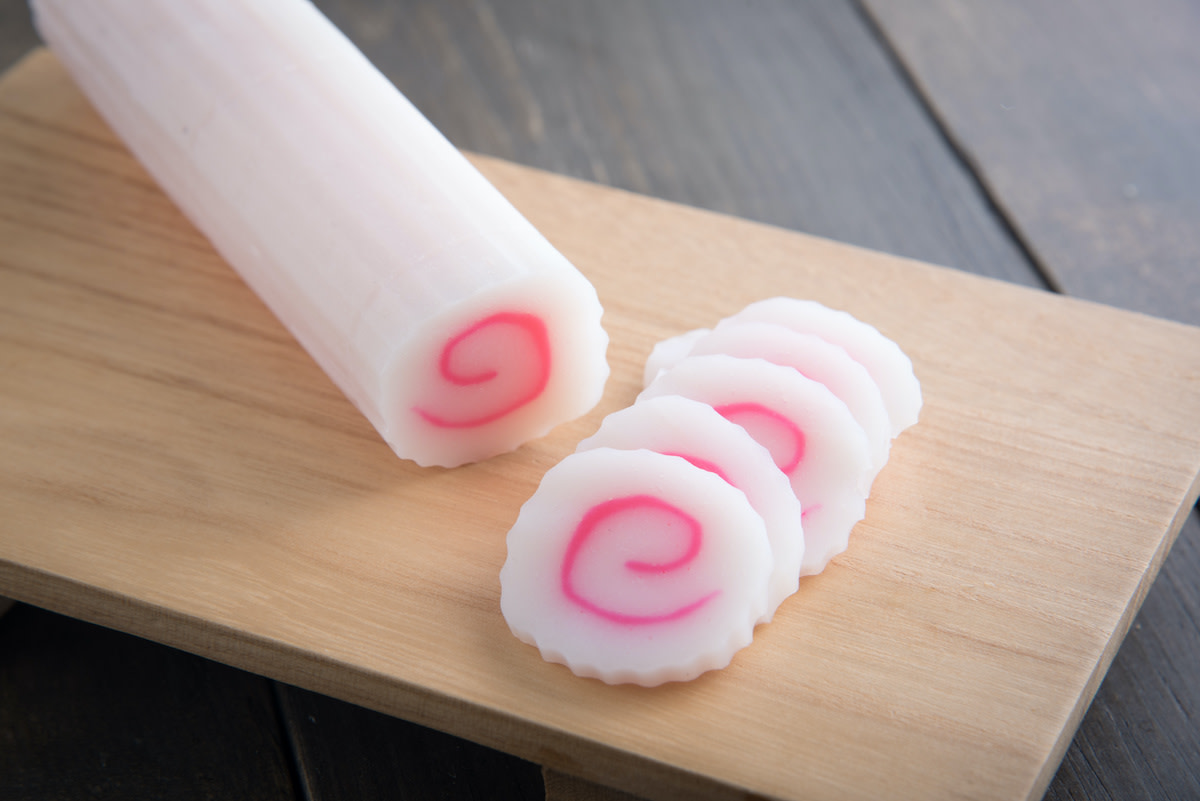Narutomaki Recipe: How to Make Narutomaki Fish Cakes
Written by MasterClass
Last updated: Sep 5, 2025 • 3 min read
Narutomaki, a type of cured fish cake, is a popular ramen topping with a distinctive pink swirl.
Learn From the Best
What Is Narutomaki?
Narutomaki is a type of kamaboko, or Japanese fish cake, that features a pink swirl in the center. Its name likely comes from the naturally occurring Naruto whirlpools located in the Naruto Strait between Shikoku and Awaji Island in Japan. Narutomaki is made from surimi (white fish paste) that’s been molded into a log and steamed. The pink spiral comes from dying half of the surimi with red food coloring and then rolling it into a cylinder.
What Is Surimi?
Surimi means "minced meat," and it is made by washing pieces of non-oily fish (typically Alaska pollock or southern blue whiting), finely mincing the rinsed fish, and blending it with sugar. The rinsing process removes soluble proteins, giving the fish a chewier texture, while the sugar increases the fish's stability. This method was first developed in the days before refrigeration to preserve fish. Today, most of Japan's narutomaki is made in the city of Yaizu in Shizuoka Prefecture, also known for its bonito production.
Origins of Narutomaki
Fish pastes have a long history in Japan. They existed as early as the Heian Period (794–1192), during which time fish paste was typically molded around a bamboo stick and cooked over a fire. This traditional preparation is known today as chikuwa.
Kamaboko, or a log of surimi molded on a wooden board, was a later invention, appearing at the end of the sixteenth century. It is likely that narutomaki was developed during the Edo Period (1600–1868) as one of several different styles of kamaboko.
How to Use Narutomaki
Narutomaki has a chewy texture and mild flavor. It is similar to gefilte fish, but with a smoother, almost rubbery texture. Although it's made from fish, narutomaki does not taste very fishy due to the washing process.
Narutomaki is a popular topping for ramen noodle soup of all flavors (miso, shoyu, and shio, for example) because it adds a pop of color to an otherwise beige-leaning dish and compliments noodle textures. It's also commonly used as a topping for soba and udon noodles.
Japanese Narutomaki Recipe
makes
1 logprep time
15 mintotal time
30 mincook time
15 minIngredients
- 1
Fill a large pot with a couple of inches of water and bring the water to a simmer. Place a steamer basket on top of the pot.
- 2
Prepare the fish. Remove the skin from the filets along with any fat and bones. In a colander, thoroughly wash the fish under cold running water. Use your hands to squeeze any excess water out of the fish.
- 3
Roughly chop the fish and add it to the bowl of a food processor with the egg white, salt, sugar, and mirin. Process until smooth.
- 4
Transfer half of the paste to a small bowl. Mix in red food coloring one drop at a time until the mixture is bright pink.
- 5
Line a work surface with plastic wrap. Using an offset spatula, spread the white half of the fish paste onto the plastic wrap, forming a large rectangle.
- 6
Spread the pink fish paste on top of the white fish paste, leaving a half-inch border along the long edges of the white fish rectangle.
- 7
Carefully and tightly roll the fish paste like a jelly roll, using the plastic wrap to help guide it into place.
- 8
Tightly wrap the roll in a fresh piece of plastic wrap. To achieve zig-zag edges, transfer the plastic-wrapped log to a large rolling mat made with triangular pieces of bamboo and roll the log in the mat.
- 9
Place the plastic-wrapped log into the steamer basket and steam, covered, until the log is firm and holds its shape, about 15 minutes.
Become a better chef with the MasterClass Annual Membership. Gain access to exclusive video lessons taught by culinary masters, including Niki Nakayama, Gabriela Cámara, Chef Thomas Keller, Yotam Ottolenghi, Dominique Ansel, Gordon Ramsay, Alice Waters, and more.
